Splitting Of Stone Fruits: What Is Pit Split In Stone Fruit
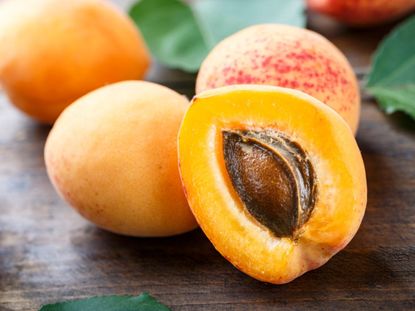

If you're suffering from splitting of stone fruits then it is likely due to what is known as stone fruit pit split. So what is pit split in stone fruit and what causes pit split in the first place? Keep reading to learn more about this disorder and what you can do to alleviate the problem.
What is Pit Split in Stone Fruit?
About 40 days after the tree blooms, the pit inside the fruit begins to harden. At this point the flesh adheres to the pit tightly. Anything that causes rapid swelling and growth of the flesh exerts pressure on the pit. If the fruit swells before the bond between the pit and the flesh weakens, the pit may be pulled apart. If the fracture occurs along the suture line that runs down the side of the pit, the result is pit split. If the pit breaks into several pieces, it is called pit shattering. Fruits with pit split disorder may exhibit external signs that indicate there is a problem. Visible symptoms include misshapen fruit and openings at the stem end of the fruit. Fruit with shattered pits don't show any external indications of the problem. Common stone fruits associated with pit split include:
What Causes Pit Split?
Pit split and pit shattering are two stone fruit growing problems caused by environmental conditions, or by steps taken by growers to produce larger fruit. Anything that causes the fruit to grow larger increases the chance of pit splitting of stone fruits. This includes excessive thinning as well as increased watering and fertilizing close to harvest time. A late frost that causes a partial crop loss and heavy rains during the critical growth period also cause pit splitting and shattering.
Control Measures for Stone Fruit Pit Split
While there is little you can do once you are exhibiting these stone fruit growing problems, you can take measures to prevent it from happening. Avoid excessive thinning. It's best to wait until after the pits have hardened to thin the clusters. You may be able to get the same results from pruning out some of the fruit-bearing branches rather than reducing the size of the clusters. Don't take steps to increase the size of the fruit as harvest time approaches. Avoid excessive watering and fertilizing. The fruit ripens evenly if the soil is kept consistently moist at all times. Irregular patterns of drought followed by excessive moisture encourages pit split. Early ripening varieties are most susceptible to stone fruit pit split because of the short time between pit hardening and fruit swelling. Choose late varieties from local nurseries where they can help select appropriate varieties for the local climate.
Gardening tips, videos, info and more delivered right to your inbox!
Sign up for the Gardening Know How newsletter today and receive a free download of our DIY eBook "Bring Your Garden Indoors: 13 DIY Projects For Fall And Winter".

Jackie Carroll has written over 500 articles for Gardening Know How on a wide range of topics.
-
 Forage For Herbs: 7 Tasty And Safe Wild Herbs To Pick Close To Your Own Backyard
Forage For Herbs: 7 Tasty And Safe Wild Herbs To Pick Close To Your Own BackyardIn addition to growing your own herbal staples, did you know there are several wild options out there that are safe and tasty – and free? Try foraging these 7 wild herbs
By Amy Grant
-
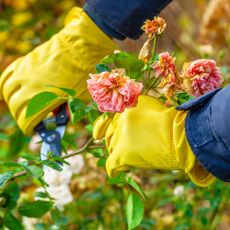 Should You Cut Back Roses In The Fall? – When To Prune Your Prized Shrubs For Winter
Should You Cut Back Roses In The Fall? – When To Prune Your Prized Shrubs For WinterDiscover whether to cut back roses before the onset of winter – or to leave plants alone until spring.
By Melanie Griffiths
-
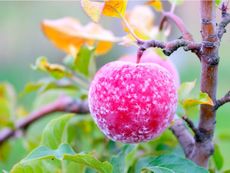 How To Protect Fruit Trees From Frost And Freeze
How To Protect Fruit Trees From Frost And FreezeChoosing fruit trees appropriate for your growing zone is best, but you still may need to protect them from extreme cold. Read how.
By Bonnie L. Grant
-
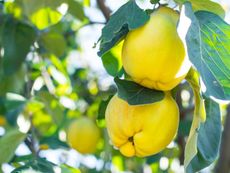 Best Plants For Late Summer and Fall Fruit Harvest
Best Plants For Late Summer and Fall Fruit HarvestEven if you don’t have the optimal conditions for more common fruit trees, there are other end of summer fruits to enjoy.
By Teo Spengler
-
 Best Native Fruit Trees To Support Wildlife
Best Native Fruit Trees To Support WildlifeIf you want trees that will attract and feed wildlife, learn the best kinds of edible fruit and nut trees to plant for inviting specific creatures.
By Teo Spengler
-
 Orange Fruit Varieties: Growing Fruits That Are Orange
Orange Fruit Varieties: Growing Fruits That Are OrangeOrange colored fruit isn’t limited to the citrus orange. There are plenty of other orange colored fruit varieties, each packing a healthful punch. Read on for more.
By Amy Grant
-
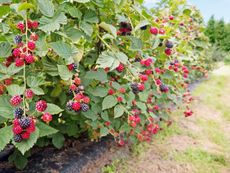 Everbearing Plants: Learn About Everbearing Varieties Of Fruit
Everbearing Plants: Learn About Everbearing Varieties Of FruitWhat does everbearing mean? And more importantly, how do everbearing varieties differ from non-everbearing types? Read on for more.
By Laura Miller
-
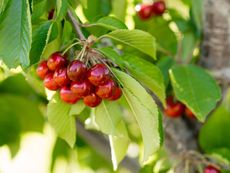 Plant A Red Fruit Garden: Growing Fruits With Red Flesh
Plant A Red Fruit Garden: Growing Fruits With Red FleshPlanting a red fruit garden may seem a bit whimsical. That is, until you realize the health benefits of consuming fruits with red flesh.
By Laura Miller
-
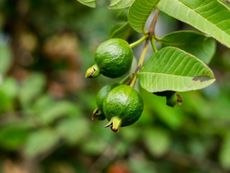 Heat Tolerant Fruits - Growing Fruit In Hot Weather
Heat Tolerant Fruits - Growing Fruit In Hot WeatherSome fruit grows in extreme heat naturally. But there are also specially cultivated, heat-tolerant varieties. For more information on heat tolerant fruits, read on.
By Teo Spengler
-
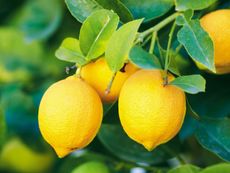 Yellow Fruit Varieties - Growing Fruit That Is Yellow
Yellow Fruit Varieties - Growing Fruit That Is YellowWhat fruit is yellow? There's more than the bananas at the supermarket. Try growing yellow fruit for a consistent supply of sunny food.
By Bonnie L. Grant